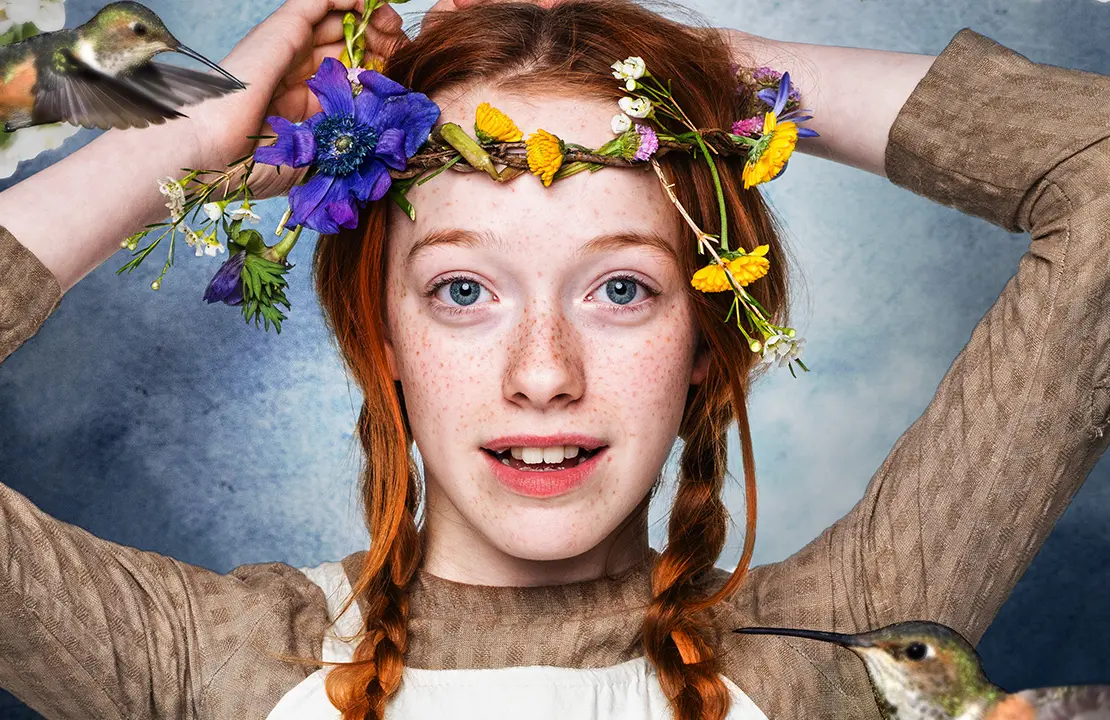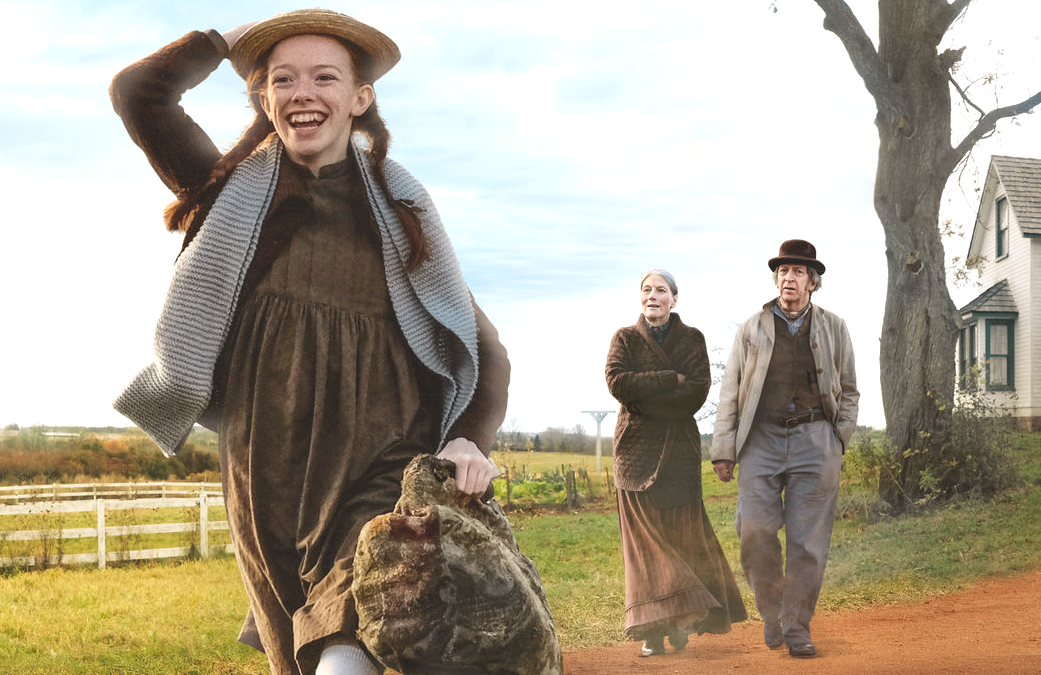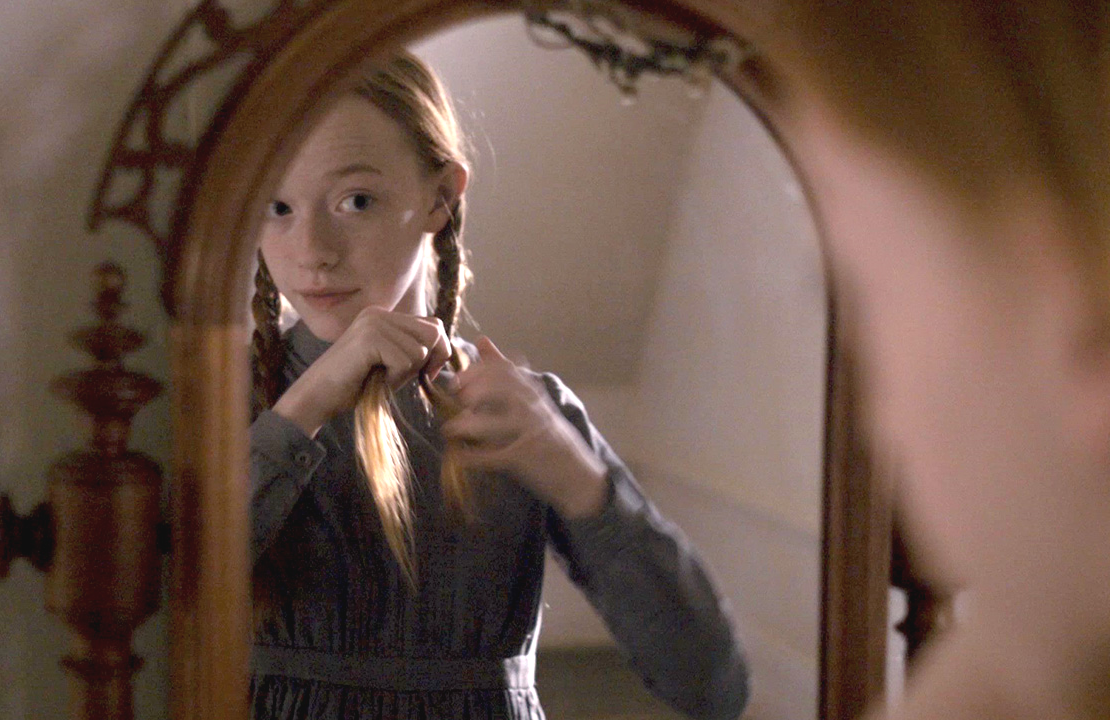Anne with an E Takes Us to Her Creator’s Dark Places
-
 Amybeth McNulty stars in Anne with an E (Netflix/CBC)
Amybeth McNulty stars in Anne with an E (Netflix/CBC)Anne with an “E”
Season 1, episodes 2-7
Watch on NetflixMy wife likes to say that men won’t read books about women, but that women read books about men all the time, “otherwise we wouldn’t have anything to read.” So fellas, this edition of The Overlooked is especially for you.
Anne with an E, based on the Anne of Green Gables children’s books by Canadian author L.M. Montgomery, brings one of the 20th century’s most beloved characters into the world of 21st-century TV storytelling. This Netflix-CBC co-production, which premiered in 2017 and is scheduled to launch Season 3 this year, was created by Moira Walley-Beckett, best known for her work on one of the bleakest dramas of the Peak era, Breaking Bad.
Walley-Beckett took Montgomery’s heroine Anne Shirley — a precocious, loquacious redheaded orphan — and made her darker, more troubled, and frankly, more appealing to viewers of both sexes than the buoyant, girlish Anne of popular memory.
From the time she was introduced to readers in 1908, and to viewers around the world through numerous film and TV adaptations, Anne’s story has connected with millions of mostly female fans. Outside Canada, that is true of no place like Japan. Every year thousands of families make the trek to Prince Edward Island and the quaint home, now a national historic site, where Maud Montgomery (as she was familiarly known) lived and wrote, and where she is buried.

We visited P.E.I. a decade ago, just as the financial markets were tumbling. For hours we had been driving around the island, listening in horror as newscasters explained what credit default swaps were and how they had somehow pushed the global economy to the brink. Pulling up to the unassuming estate and switching off the radio, we were instantly transported to the carefree existence of the tourist. For the next few hours no one spoke of the uncertainties of the outside world — or if they did, it was in Japanese.
Outside the Butter Churn Cafe, I chatted up a tour-bus driver, who was one of ten (!) full-time drivers employed by his Japanese-language company. He too had read Anne of Green Gables. It was part of his middle-school English curriculum in Japan. “It’s assigned reading,” he said. “It was really funny! It had a lot of funny themes.”
When I asked the driver what he thought was behind Anne’s appeal, he invoked history. “It was after the war, and people didn’t have a lot of money,” he said. While Westerners tend to focus on Anne’s plucky personality, her appeal in Japan may have had more to do with her abject poverty and helpless circumstance. As Willa Paskin noted in her 2017 preview of the new TV series, Japan was “orphan-filled” after the war.
And indeed, as we poked around the Montgomery estate, it became clear that Anne could well have been an expression of the alienation and dread felt by her creator. By 2008 Montgomery’s family had begun speaking openly of Maud’s battles with depression, and of the likelihood that the author of such a beloved and empowering character had taken her own life.
As we stood silently over her grave, in a garden adjacent to the house, I remember feeling the poignancy of the contrast between the Anne we knew from media aimed at schoolchildren and the Anne who must have existed in Montgomery’s head.
Anne With an E gets much closer to that more tortured soul than any adaptation of the past. There’s a revealing scene in Episode 4 where Anne has been left at home to mind the stove. Picking up a shiny silver plate, she looks at her image and is instantly transformed into a princess. She is trying on a new party gown designed by her faithful servant, whom she names Griselda.

“This will do nicely for dancing,” she declares, oblivious to the smoke pouring out of the kitchen. “I do so appreciate all your careful attentions, Griselda. I think it’s ever so important to give credit where credit is due. How awful it would be to be in service of those who neglect you or treat you unkindly. I can imagine it would make you feel quite small and occasionally despairing and lacking in confidence.”
And then, in a quiet voice, “I wonder if those feelings ever go away.”
Mind you, by this time Anne has been assured of her place in the Cuthbert household, where two bachelor siblings had fallen in love with her despite the fact they had asked the orphan agency to supply a boy (who could work the farm). This happy situation, we are told through flashbacks, is a far cry from earlier years where Anne was made a slave by a previous family, complete with verbal and physical abuse.
That Anne is still vulnerable to feelings of extreme loneliness could be taken a couple of different ways. As Paskin and others argued, maybe it was PTSD — Anne’s mistreatment at such a tender age left her with permanent emotional scars. While certainly credible, this explanation would seem to undermine scientific findings that kids are chock-full of grit, able to let even the worst traumas roll off their backs.
But there’s other science to suggest that depression is the result as much of nature as it is of nurture (or lack thereof). While critics pointed out that Anne with an E was a departure from the Green Gables Anne that millions knew, it may in fact be the Anne that her troubled creator had in mind all along.
“I take nothing away from Anne,” said Walley-Beckett, the show’s creator, told Willa Paskin. “She is buoyant, she’s optimistic, she’s bright, she’s fiery, she’s sunny, she’s imaginative, she’s curious. I just add in the reality of her history.”
Unfortunately, there’s a lot of emotional navigating to get us from that earlier Anne to the one in Anne With an E. And in the show’s pilot episode Walley-Beckett doesn’t quite pull it off.

“On one hand, it’s a brilliant interpretation: Like many young adult stories, Anne of Green Gables has disturbing subtext about Anne’s life before she meets the Cuthberts,” wrote Sonia Saraiya in Variety. “On the other hand, the show can’t quite sustain the brilliance, veering first into maudlin territory and then into the oddly saccharine as it tests out its tone.” The result at times is “a slightly soapy view of Anne’s trials and tribulations that at times really humanize her and in others, are rather infantilizing.”
Actually, I felt the show leveled out emotionally after the opening 90 minutes. Unless you’re unfamiliar with Anne’s story (you know who you are, guys), you have my permission to skip Episode 1.
Margaret Atwood wrote a few years back that the genius of L.M. Montgomery was to take a character with such a woebegone backstory and present her as the opposite, not as “the gritty gray Angel of Realism, but the rainbow-colored, dove-winged Godlet of the Heart’s Desire.” Except we now live in a time when people, remarkably enough, find the Hulu adaptation of Atwood’s dystopian The Handmaid’s Tale to be inspirational and empowering.
Maud Montgomery died in 1942. Even if she were with us today, I doubt she would presume to dictate to TV audiences what to think of Anne Shirley. That girl belongs to the ages now, and our age demands a dark side.
People are talking about Anne with an E in our forums. Join the conversation.
Aaron Barnhart has written about television since 1994, including 15 years as TV critic for the Kansas City Star.
TOPICS: Anne With an E, CBC, Netflix